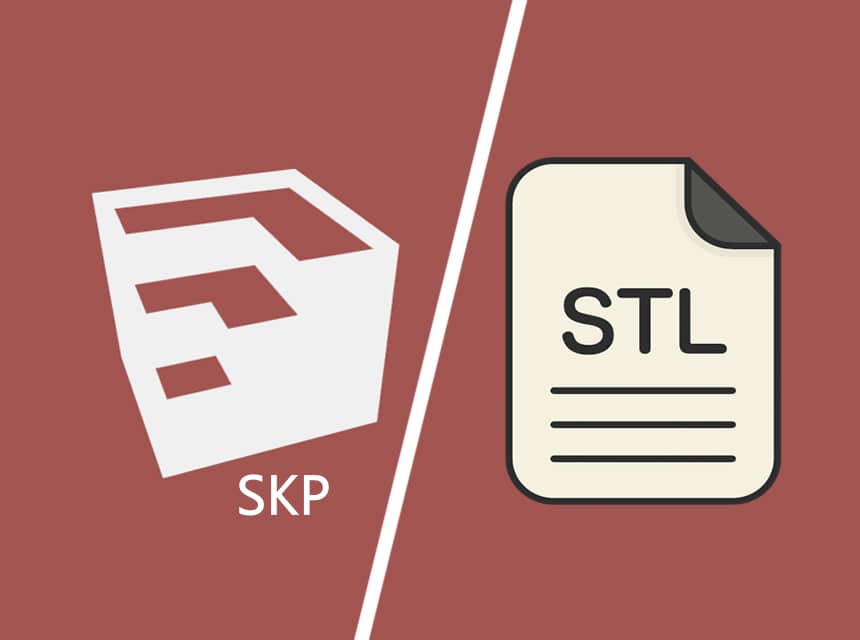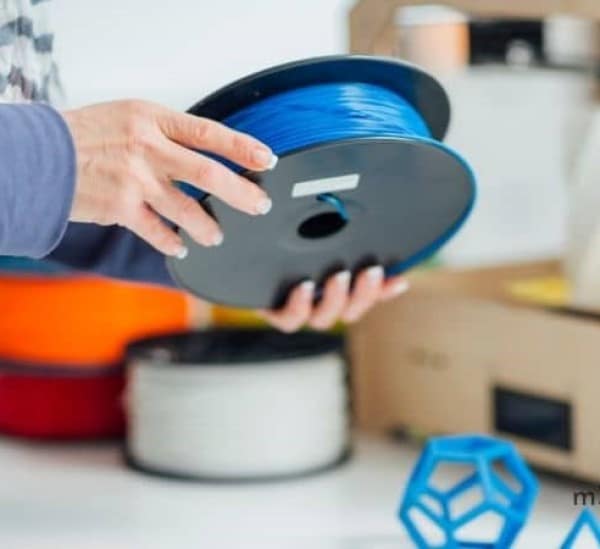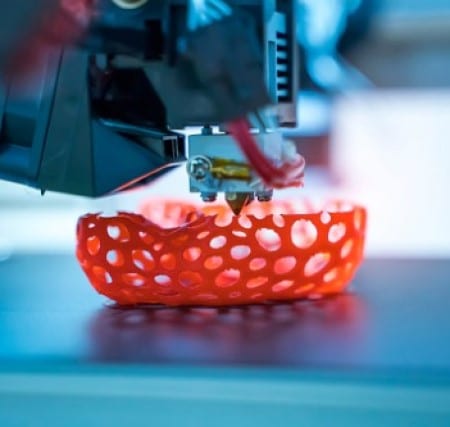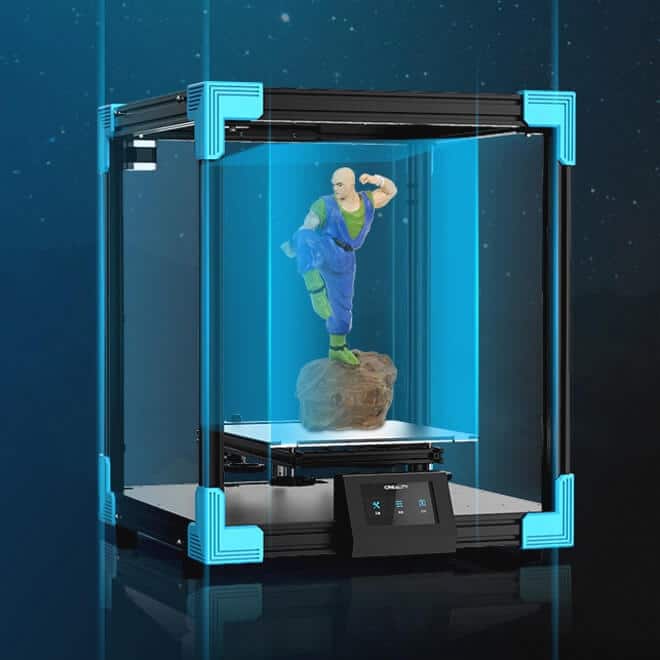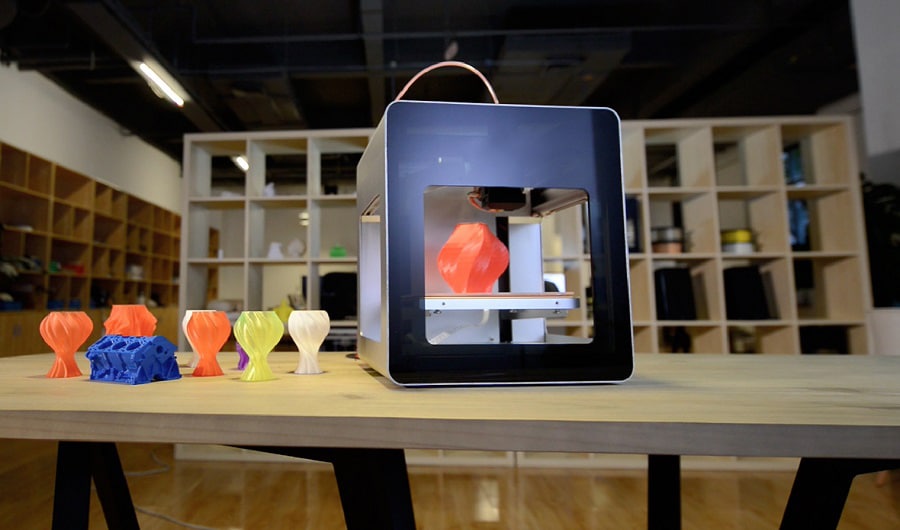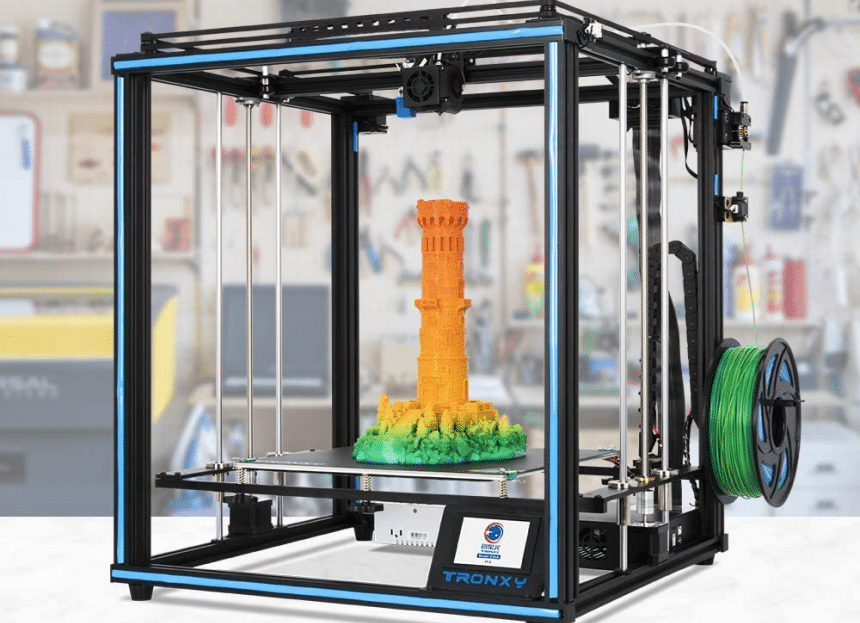



Elegoo has received good reviews for its Mars LCD 3D printer, which offers high-quality resin printing at an affordable price, but with a relatively normal build space. Now Elegoo is trying to have another success with the new Elegoo Saturn 3D printer. Released in mid-2020, the Elegoo Saturn is presented in a market already saturated with cheap LCD printers.
However, there are a few things that make it stand out: the resolution, print speed, and print size. These are some of the factors that prompted this Elegoo Saturn review. With Saturn, Elegoo launched a printer which is larger than the size of its Mars printer. It additionally comes with a monochrome LCD screen that allows it to work at breakneck speed when curing layers. All of this places the Elegoo Saturn, with its mid-size build area, in a prominent position in the market.
How does the Elegoo Saturn work and what is the technology backing it up? First, we’ll see how the printer works before seeing the features that come with it.
If you could only read just a section of this review, then this technology aspect should be the one. The Elegoo Saturn is a masked stereolithography 3D printer; it uses LCD UV Photocuring.
Stereolithography has its meaning from two words from Greek: Stereo, meaning solid, and lithograph, which means to write.
The stereolithography printers create objects with the use of light. Common stereolithography printers make use of laser.
Stereolithography machines that is based on laser uses ultraviolet lasers to build prints. The lasers reflect off on the print surface. Then the light hardens the resin layer by layer. Printing processes that deploy DLP stereolithography, however, project light on the resin.
Meanwhile, masked stereolithography is replacing laser and the use of projector with LCD screen.
The benefit with masked stereolithography is that it prints objects considerably faster than an SLA laser printer. This is even more when printing thicker and larger figures. Also, as the LCD panels are almost the same as those used in the making of smartphones, it’s always available on the market.
They are always available, which is why the LCD panel of this 3D printer also cost less.
Yes, MSLA printers like this are generally faster than printers with laser stereolithography. This is due to the technology which allows it to print a full object layer rather than the small-by-small printing done with laser.
However, as MSLAs use the same LCD screens as their smartphones, these color LCD screens have filters that transmit green, blue, and red to the screen. The filters then block light that is supposed to be directed to the resin, curing it.
Therefore, with MSLA printers, monochromatic LCDs aren’t bad. It simply means it can print objects faster than many MSLA printers. And the Saturn indeed has up to 40 millimeters (1.2 inches) per hour printing speed.
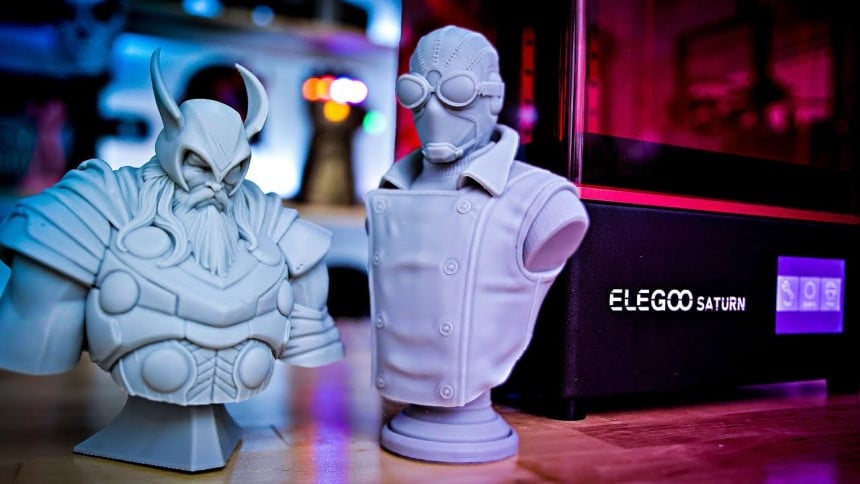
The Elegoo Saturn uses a 4K display with 3840 x 2400 pixels resolution and backlighting from UV LEDs with a wavelength of 405 nm. It has a printing speed of 30-40 mm/h and a layer thickness of 0.01–0.15mm.
After each shift, the print bed moves a tiny bit upwards on the movable Z-axis, so that the object is built upside down. That gives a resolution of 0.05mm per pixel and one layer thickness between 0.01 mm and 0.15 mm. Depending on the setting, the Elegoo Saturn can manage up to 40mm per hour. You can either print using a USB stick or an Ethernet cable with a PC and Chitubox, the common program for SLA printers.
Its large format allows you to print large parts without having to cut them into several parts and its 4K screen is ideal for very precise rendering. In addition, its screen being monochrome, the light is more intense and the layers harden more quickly (than on the Elegoo Mars for example). This can help you save a lot of time on big prints.
The Chitubox software is rather easy to learn. So, it is suitable for beginners and the most experienced users.
Perhaps the biggest downside of the printer is the speed. At only 40 mm / h, the maximum printing speed is significantly lower than that of the LD-006 or Photon Mono X, which can both reach 60 mm/h.
Although the actual printing time, in the end, is mainly due to the slicer settings, the jump from the last generation is not as big as with the other manufacturers (Anycubic even boasts of 80 mm/h with the Photon Mono SE).
Like the Photon Mono X from Anycubic, the Elegoo Saturn works with resin filaments. Although no resin filaments come with the machine, the company manufactures and sells its resins. But you can use third-party products with this printer.
As is common with modern MSLA resin printers, the Elegoo Saturn is compatible with a wide variety of UV-sensitive 405nm resins.
You have to note that the Saturn has an improved tank for the resin. The upgraded resin tank that comes in the Saturn includes small handles by the sides with four 4 legs at the bottom.
To be honest, this is not the most surprising feature. Although the tank can be moved away and placed on a table without scratching the FEP film, some of the improvements is negated by its screws.
The tank now contains a spout in a corner, making it a bit easier to change the resin. Something that the brand has not transferred from the Mars Pro is the presence of some kind of resin level indicator in the tank.
The good news is that they do not seem to use their tank, so in the future, we could find cheaper parts or spare parts.
Also, it’s good to see that the tank is nice and big because the Elegoo Saturn is going to waste resin like hotcakes. In the case of large resin prints, this could therefore be a problem.
Warning: Resin is chemical synthetic. This is very irritating. So, try to avoid any skin contact. If you end up touching it, it’s necessary that you wash your hands. However, each skin reacts to it differently. The vapors it emits are also dangerous. So, there must be adequate ventilation in the room the printer is. Also, it’s necessary that you clean the object printed with isopropanol. It must also be cured with UV light.
The Elegoo Saturn is for 3-dimensional printers who want to build a large volume of figures with high accuracy under fast layer curing time. However, it’s not for or should not be used around children who are under the age of three. This is because it has components considered as “choking hazards.” Overall, it’s a great printer for advanced users who can use ChiTuBox slicer and want to print large work.
For the most part, the Elegoo Saturn is an enlarged version of the Elegoo Mars with many of its design features. However, it includes some important changes.
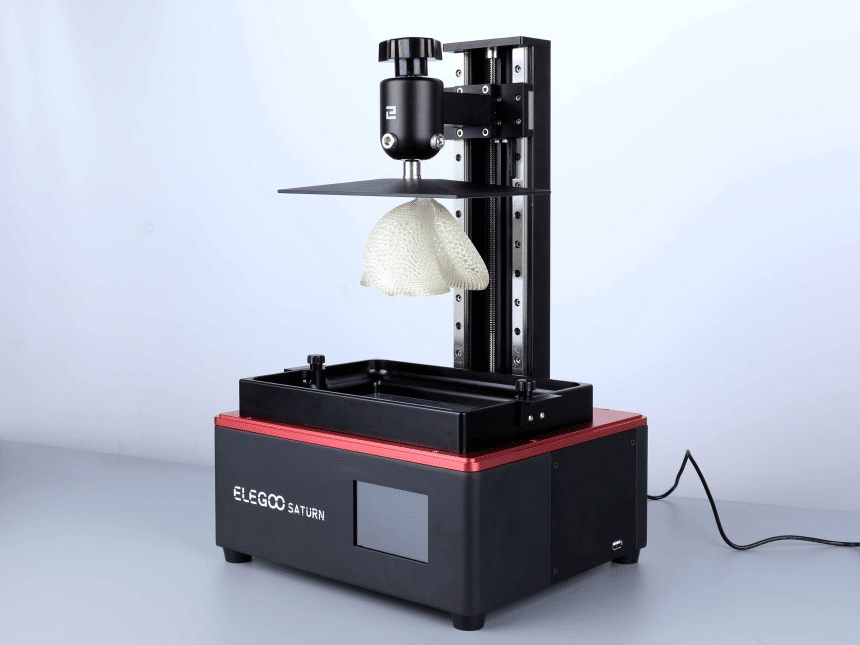
In this sense, the Saturn doesn’t disappoint 3D printing users. The machine has a high build volume that measures 192 x 120 x 200 millimeters (7.6 x 4.7 x 7.9 inches). With these dimensions, it shows it significantly outperforms the Mars. In fact, the Saturn has up to 3.5x the build volume of the Mars from Elegoo, which is a considerable improvement.
As a direct result of using a 4K display instead of the 2K panels we often find on these machines, it should be able to achieve a similar level of detail like the Elegoo Mars on larger prints.
When you take a look at Elegoo Saturn’s 192 by 120 by 200 mm build volume, we can compare it to Elegoo Mars’, which has a considerable build volume of 120 x 68 x 155mm. This shows Saturn’s build volume is much larger. With this build volume, you can print much larger models.
A print resolution of 50 microns means that this printer can produce larger prints with the same level of detail as the Elegoo Mars.
With 0.05 mm compared to the 0.047 mm of the small muffle printer, this is a difference that you can see on the finished print piece. Especially with round prints or slightly curved parts, this lower resolution is easily recognizable in the form of a pattern that is reminiscent of the salmon skin effect.
The Saturn with its 0.05mm (3840 x 2400) X/Y resolution is one of the better options compared to other printers of comparable size. A higher resolution is nowhere to be seen in the range of the Elegoo Saturn model. But, on the market, you can find models with up to 0.085 mm resolution.
This somewhat low resolution is our only point of criticism, not especially on Saturn, but on all larger mSLA printers on the market today. If you want to buy a large mSLA printer, you have to live with this somewhat coarser resolution, at least for now.
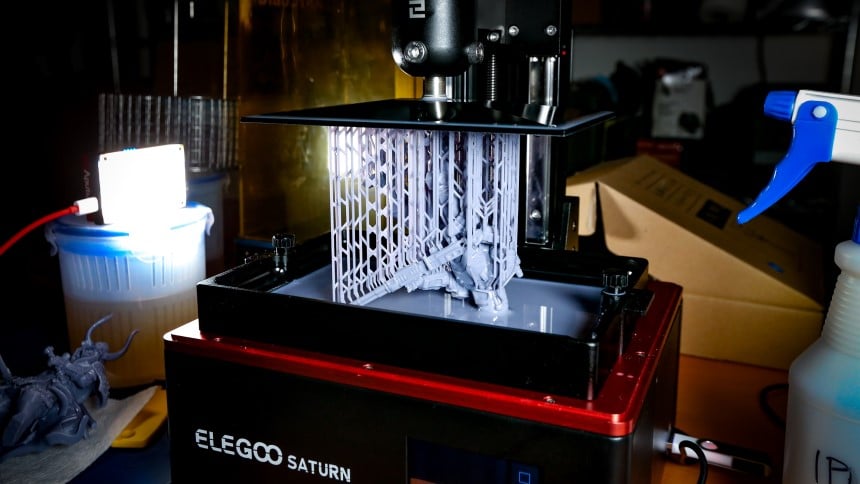
How easy to use is the Elegoo Saturn? To answer this question, we will take a look at the display, connectivity, and the recommended and compatible software of the printer.
The Saturn user interface is a 3.5 inches full-color touchscreen that has an intuitive layout. It works with the ChiTuBox and offers a clear and simple to use user experience.
The 4K monochrome display is one of the best novelty features of the Saturn. Monochrome LCD screens are found less in resin printers.
If you didn’t know, monochrome displays allow ultraviolet light to reach the resin more easily. More light means faster prints. Compared to normal resin printers that take 8-10 seconds for each layer, the Saturn is a high performer because of its high print speed.
An added benefit of the LCD screen is its improved lifespan. As the crystals inside the screen are very resistant to ultraviolet rays, this screen can last up to 2,000 print hours. This is around four times more than a normal LCD screen.
The Elegoo Saturn has a second fan to cool the machine during operation. LCD screens generally degrade over time when exposed to heat. To extend the life of the monochrome panel, the Saturn is well built in this aspect.
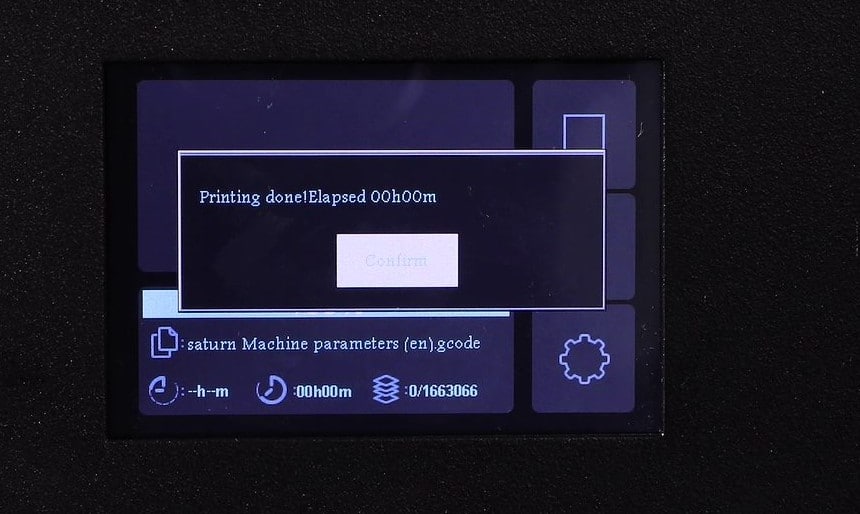 Connectivity
ConnectivityThe Saturn has USB connectivity. The Ethernet port located at the back is another great feature of this printer. This way, you can simply connect the printer to the internet via the network. Also, you’ll be able to print remotely. You no longer need to carry your USB drive around with you.
The Saturn is equipped with 4-gigabyte flash memory, the Chitubox can get connected to the resin printer via the network and then save the files printed.
There is no WiFi feature.
ChiTuBox is the software of choice here. A version is included on the USB stick for installation, but you better get the current version from the official website. If you have already worked with ChiTuBox (or any other slicing software), nothing will surprise you here.
Here, too, is a short explanation, in case you don’t even know what the slicing software is for. The print file of your object that you need to print must first be converted into a format that your printer can read and print with.
This process is called slicing. In the software, you can change the size of the object, rotate it or duplicate it and thus print several at once. The level of detail and the printing speed can also be set here.
The operation of the software is nevertheless very intuitive. Since ChiTuBox knows most printers, you don’t have to do anything more at the beginning than select the printer and you can make the first prints with the default settings and adjust them later if necessary.
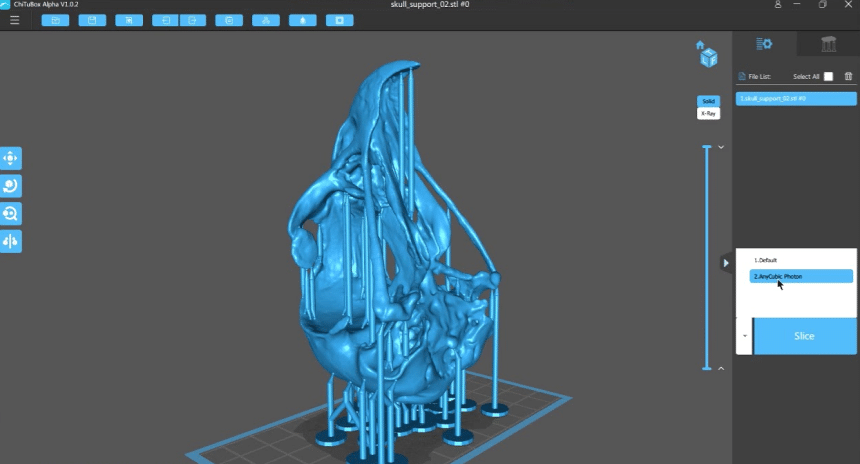 What Comes with the Purchase?
What Comes with the Purchase?Here is the full content of the Elegoo Saturn kit:
In the sales version, a 6 mm Allen key is also included to lock the leveling screws. You still want to consider whether a replacement FEP film will be included in the package.
For the size of the printer, the box it came in was pretty compact. Every cubic centimeter has been used here. As usual, there is plenty of foam to protect the printer during transport.
There was also a large, red “Fragile” sticker on the packaging. All sensitive surfaces that can potentially scratch are also covered with a protective film. These are the complete cover, the pressure plate, the display, and the touchscreen.
The Saturn stereolithography printer uses 405nm UV resins from any supplier, although Elegoo offers them under its brand. The recommended slicer is ChiTuBox, which is Windows and Mac compatible, to open STL, SLC, and OBJ files. The SLA / MSLA printer is connected by an Ethernet network or via a USB key. You also have an internal memory of 4 GB to start printing from the control screen.
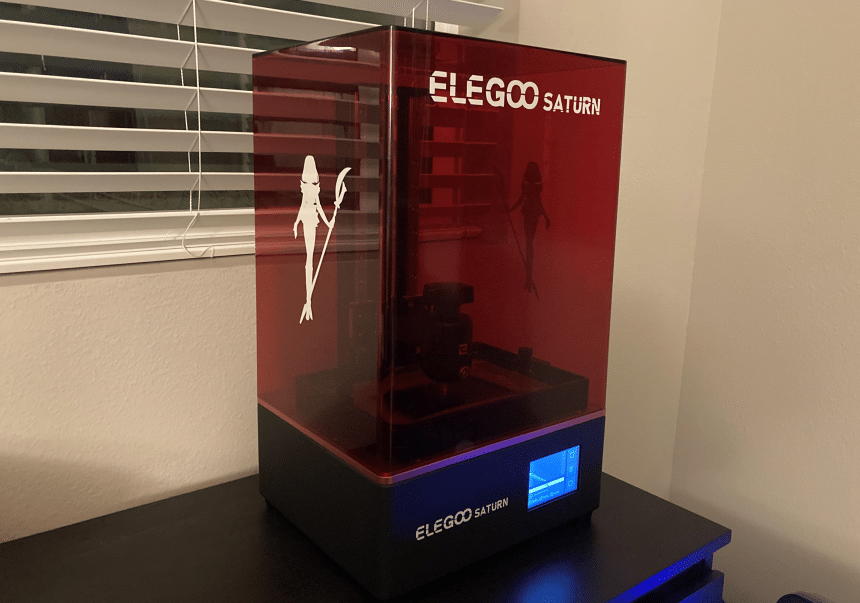
A high-resolution monochrome LCD was also installed, which promises higher printing speed and longer service life (allegedly up to 500 operating hours) than Mars.
The 54 UV LED matrix light source also corresponds to that of the Mars Pro. Depending on the material, the exposure time per shift can be reduced to up to 2 seconds. This is made possible by the better UV light transmission of the monochrome display.
The real print quality in X and Y has, however, arithmetically decreased slightly due to the larger installation space despite the higher LCD panel resolution. While Mars and Mars Pro create 0.047 mm, Saturn is 0.05 mm. But in reality, it doesn’t make any difference.
The two linear guide rails for the Z-axis also provide more stability than the Mars, which is certainly necessary for larger prints.
The double fans, which can also extend the operating hours of the LCD, are also a factor that makes it worth buying. This also makes the LCD more long-lasting. The Saturn has neither a rubber seal (which was not ideal on the Mars Pro either) or an air filter system.
The aluminum printing platform itself is sandblasted and therefore enables better adhesion.
The Elegoo Saturn comes with a one-year warranty. This is neither extensive nor too short for a printer in this range. In comparison, the Photon Mono X from Anycubic also comes with one year of warranty.
Note that the Elegoo Saturn warranty doesn’t cover the 4K LCD and the FEP film. The tool kit is also excluded.
With all the nifty features, considerable print volume, fast print times, and other attractive benefits, you’d expect to pay big for the opportunity to own an Elegoo Saturn.
However, this printer retails between $500 and $700 depending on where you look. The final price is currently still under $500 when you purchase from Elegoo directly. On Amazon, it is more expensive. However, the device was only priced at $400 following its launch in 2020.
| PROS | CONS |
|
|
In recent years, Elegoo has established itself as one of the best-known LCD 3D printer manufacturers in the world. In addition to the 5.5-inch Mars and Mars Pro LCD 3D printer, its new Saturn is an 8.9-inch LCD 3D printer with a large 192 x 120 x 200mm print space. Furthermore, this is Elegoo’s first LCD 3D printer with a monochrome LCD screen, which allows much more wear resistance and much stronger exposure intensity.
As we mentioned in the Elegoo Saturn review, the SLA/MSLA 3D printer is the big sister of the famous Mars. Its 22.6 cm monochrome 4K LCD gives a resolution of 3840 x 2400 pixels. It has a minimum layer height of 10 microns for objects up to 192 by 120 by 200 mm. At the maximum speed, it is up to four times faster than Mars, between 1.5 and 2 seconds per layer of liquid resin. It’s a top MSLA printer recommended for starters and advanced users who need large builds.
